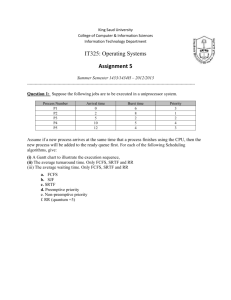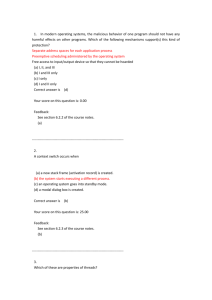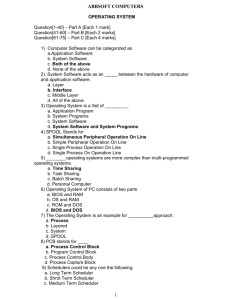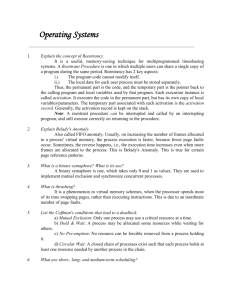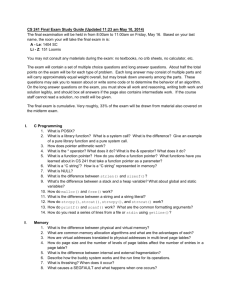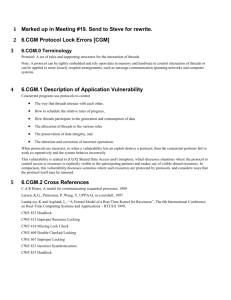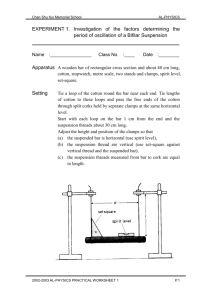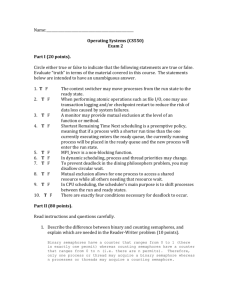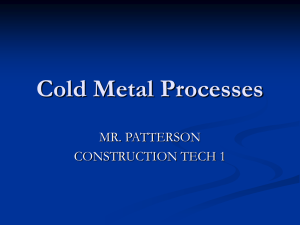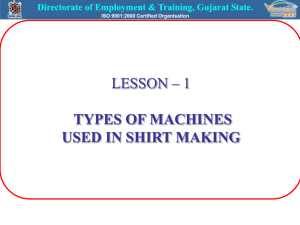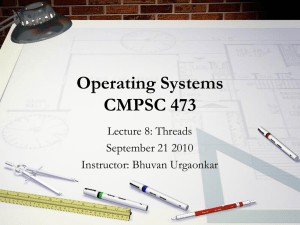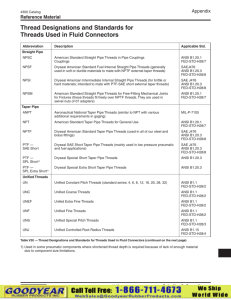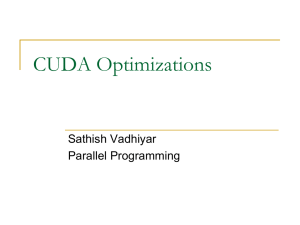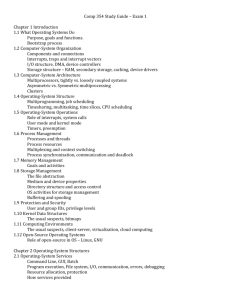CS 343 OS
advertisement
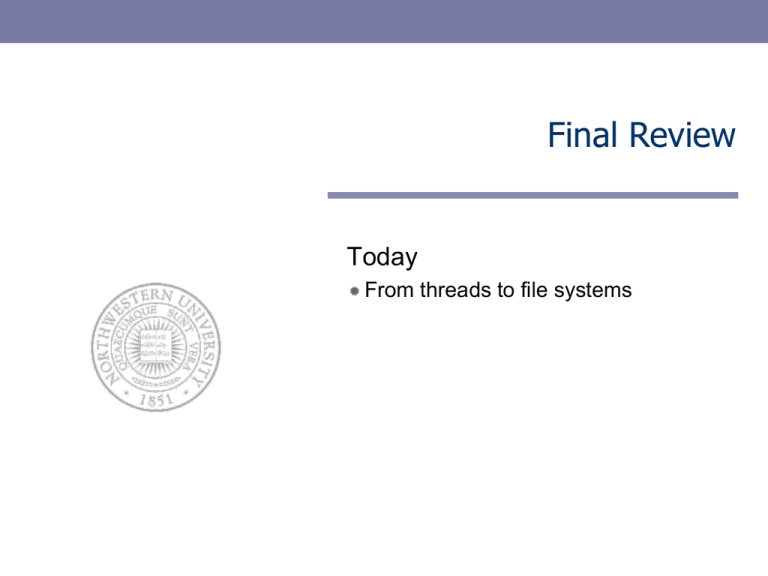
Final Review
Today
From threads to file systems
Threads
Threads motivation and concept
Threads and processes
User, kernel-level and hybrid threads
Complications with threads
Q: If a multithreaded process forks, a problem occurs if the child
gets copies of all the parent’s threads. Suppose that one of the
original threads was waiting for keyboard input. Now two threads
are waiting for keyboard input, one in each process. Does this
problem ever occur in single-threaded processes?
Q: In a system using user-level threads, is there one stack per
thread or one stack per process? What about when kernel-level
threads are used? Why or why not?
2
Thread synchronization
Race conditions and critical sections
Requirements for a solution
Locks and lock implementation
Disabling interrupts and TSL
Busy waiting, priority inversion and sleeping
Basic lock-based data structures
Q: Can two threads in the same process synchronize using a
kernel semaphore if the threads are implemented by the kernel?
What if they are implemented in user space? Assume that no
threads in any other processes have access to the semaphores.
3
Synchronization II
Condition variables
Semaphores
Bounded buffer problem
Reader-writers problem
Issues with semaphores
Monitors
Q: Give a sketch of how an operating system that can disable
interrupts could implement semaphores.
Q: Write (pseudocode) a monitor that implements an alarm clock
that enables a calling program to delay itself for a specified
number of time units (ticks). You may assume the existence of a
real hardware clock that invokes a procedure tick in your monitor
at regular intervals.
4
Monitor for an alarm clock
monitor alarm {
condition c;
void delay(int ticks) {
int begin_time = read_clock();
while (read_clock() < begin_time + ticks) c.wait();
}
void tick() {
c.broadcast();
}
}
5
Deadlocks
Deadlock definition
Condition for deadlocks
Modeling deadlocks
Deadlock detection and recovery
Dynamic deadlock avoidance
Deadlock prevention
Q: A system has two processes and three identical resources.
Each process needs a maximum of two resources. Is deadlock
possible? Explain your answer.
6
I/O
Principles of I/O hardware
I/O software layers
Ways I/O can be done
Disks
Disk scheduling
RAID
Q: A computer manufacturer decides to redesign the partition
table of a Pentium hard disk to provide more than four partitions.
What are some consequences of this change?
7
File systems interface
File system abstractions – files and directories
Implementing files
Implementing directories
Protection
Q: A key issue when designing a file system is deciding how to
keep track of which disk block goes with which file. Of the
approaches discussed in class, which one would you choose to
maximize efficiency in terms of speed of access, use of storage
space, and ease of updating (adding, deleting, modifying) when
the data is:
a. Updated very infrequently and accessed frequently in random order.
b. Updated frequently and accessed in its entirety relatively frequently.
c. Updated frequently and accessed frequently in random order.
8
File systems implementation
Early FS examples – CP/M, MSDOS, Original Unix
FFS
Fsck and journaling
Log file system
Q: In UNIX System V, the length of a block is 1Kbyte and each
block can hold a total of 256 block
addresses. Using the inode scheme, what is the maximum size of a file? (Remember
UNIX System V uses three levels of indirection)
Q: How many disk operations are needed to fetch the i-nod e for
the file /home/fabianb/courses/eecs343/final10.tex?
Assume that the i-node for the root directory is in memory, but
nothing else along the path is in memory. Also, assume that all
directories fit in one disk block.
9
Research papers
Scheduler Activations: Effective Kernel Support
for the User-Level Management of Parallelism, T.
Anderson et al., Proc. of SOSP 1991
Experiences with Processes and Monitors in Mesa,
B. Lampson and D. Redell, CACM 1980
Design and implementation of the log-structured
file system, M. Rosenblum and J. Ousterhout, Proc.
of SOSP 1991
10



